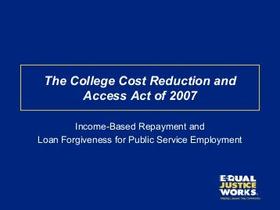Introduction
Choosing between attending a community college and enrolling at a university is a critical decision for students and their families. In 2025, with rising tuition, evolving labour-markets and changing institutional dynamics, the question of “community college vs university” warrants renewed scrutiny. This article examines the cost, quality and career outcomes across the two paths, providing evidence, up-to-date commentary and practical guidance for prospective students, parents and educators.
Defining the Two Paths
What is a community college?
A community college (also referred to as a two-year college) typically offers associate degrees, certificates, workforce training and serves as a gateway for transfer to four-year institutions.
Key features:
Open-access admission in many cases.
Lower tuition relative to four-year universities.
Flexible scheduling (evening, part-time) and local commuting options.
A greater focus on community responsiveness, workforce alignment and foundational general-education.
What is a university?
A university or four-year institution offers bachelor’s degrees (and often graduate degrees), broader academic and research programmes, residential life, and often draws students nationally or internationally.Community College Review
Key features:
Larger institutional infrastructure, more program breadth, research, extracurricular opportunities.
Higher cost (tuition, room & board) but also potentially greater prestige and network effects.
Depth in major fields and opportunity for advanced degrees.
Cost Comparison: Community College vs University
One of the most tangible distinctions between community colleges and universities is cost.
Tuition & fees
According to recent data, the average in-district tuition and fees at public community colleges was around US$3,730 per year for in-district students, compared with significantly higher levels at public four-year universities.Research.com
In one 2024 study, community college annual in-state attendance was cited at ~US$12,917, while four-year in-state attendance reached ~US$27,146.
Books, supplies, room & board
Community college students often commute and live at home, which reduces room & board costs relative to students at residential universities.
The lower total cost of attendance means less reliance on student loans and lower debt burden.
Cost savings in practice
By starting at a community college and then transferring to a university, students may complete general education requirements at lower cost before paying full university tuition for upper-division years.
Summary table: cost snapshot
| Institution Type | Approximate Tuition/Year* | Additional Costs |
|---|---|---|
| Community College (public) | ~$3,700 (in-district) | Commuting, fewer on-campus amenities |
| University (public, 4-yr) | ~$9,000+ tuition (in-state) | Room & board, dorms, meal plans, larger fees |
| University (private) | ~$30,000+ tuition or higher | Full cost of living, amenities, prestige |
*Figures approximate and vary by state and institution.
Quality: Academic Experience & Institutional Characteristics
The “quality” of education is harder to quantify than cost but encompasses class sizes, faculty engagement, support services, transfer pathways, and student readiness for careers.
Class size & teaching
Community colleges often provide smaller classes in the first two years and more individualized attention—particularly for students needing remedial work or returning to education.
Universities often shift to large lecture formats, particularly in general-education or introductory courses.
Student support & institutional resources
Universities generally have more extensive resources: research facilities, extracurriculars, robust career services, dedicated advising, and more campus amenities.
Community colleges may face resource constraints: fewer extracurricular opportunities, limited housing, and sometimes under-funded support for transfers.
Transfer pathways & articulation
A key quality metric for community college routes is the effectiveness of transfer agreements to universities. Successful transfer can bridge the two systems. As one study notes, students who complete an associate degree or transfer report higher value perceptions.
But inconsistencies in transfer credit acceptance, advising and alignment of curricula remain a challenge.
Institutional trend and environment in 2025
In 2025, both community colleges and universities face structural pressures: demographic shifts, budget constraints, technology transformation and changing student expectations.Deloitte United Kingdom
For students and parents, quality today also means choosing an institution that is adapting to these dynamics—especially with hybrid/online education, skill-based credentials and evolving labour demands.
Career Outcomes: Which Path Leads Where?
Ultimately, many families ask: will this route lead to meaningful employment and upward mobility?
Wage and employment impacts
Research from the Public Policy Institute of California (PPIC) shows that bachelor’s degree holders earn significantly more than workers without a degree: median annual wages for bachelor-holders were ~$90,000 in California, compared with far lower amounts for high-school graduates.
This underscores that university completion often unlocks higher earnings and job quality.
Community college outcomes
For community college students, outcomes vary considerably:
A recent study found that fewer than half of career-motivated community college students reported that their education helped them achieve their work-related goals.
Completion of an associate degree or transfer strongly correlates with better outcomes and stronger perceptions of value.
Career and workforce-aligned certificates can yield good returns, particularly when aligned with employer needs.
Comparative career-trajectory scenarios
If a student completes a community college certificate or associate and enters the workforce, they may achieve employment sooner and with less debt—but the premium over a high school diploma may be modest unless the credential is high-demand.
If a student uses community college as a stepping stone and then transfers and completes a bachelor’s degree, the combined cost savings plus the earnings advantage of the bachelor’s degree creates an attractive value proposition.
Direct entry into a university may cost more initially but offers the largest earnings potential and career-opportunity spread.
Summary Comparison: Community College vs University
Here is a side-by-side comparison to assist families and students:
| Dimension | Community College | University (4-year) |
|---|---|---|
| Up-front cost | Lower tuition, less debt risk | Higher tuition + living expenses |
| Flexibility & access | High — open admissions, part-time options | More structured, often full-time required |
| Class size & support | Smaller classes, more individualized (early years) | Larger classes, broad resources |
| Transfer potential | Good if well aligned and supported | Not applicable (bachelor program direct) |
| Degree level & credential | Associates, certificates, transfer credits | Bachelor’s degree (and beyond) |
| Career & earnings potential | Variable — strong if credentials + transfer | Higher earnings on average with bachelor’s |
| Risk & readiness | Lower cost risk; may need transfer | Higher cost, but broader direct pathway |
Practical Guidance for 2025 Students and Families
Ask these questions when evaluating your options:
What are the net costs (including room/board and living expenses) for the institution?
How strong is the transfer agreement if you choose the community college route?
Does the institution offer robust student support, advising and career services?
Which credentials does the labour market in your field of interest value (associate vs bachelor)?
How long do you plan to be enrolled, and what is your readiness for university-level rigor?
Tips for maximising value:
Consider starting at a community college to complete general education requirements at lower cost, then transfer to a university for your bachelor’s degree.
Choose a community college with established articulation agreements and a track record of successful transfer.
If you aim directly for a university, focus early on major preparation, financial aid planning and minimising debt.
Always check the major and career alignment: whether in community college credentials or university majors, the key is relevance to the job market.
Conclusion
The “community college vs university” question is not about one being categorically better than the other—it is about matching the path to the student’s goals, circumstances and readiness. In 2025, community colleges provide an accessible, lower-cost entry to higher education and workforce training, while universities offer broader credentials, higher earning potential and deeper academic infrastructure.
For many students, a blended strategy—begin at a community college, transfer to a university—offers the best of both worlds: financial prudence plus opportunity. But the ultimate success depends on intentional planning, alignment of credentials with career goals, and selecting institutions that support student success.
Parents, students and educators should evaluate both cost and quality, weigh career outcomes realistically, and make an informed choice based on the student’s long-term aspirations.
Author’s note: Data and institutional trends referenced are current as of 2025. Given evolving higher-education landscapes, students and families should verify institution-specific costs, support services and transfer policies when making decisions.















